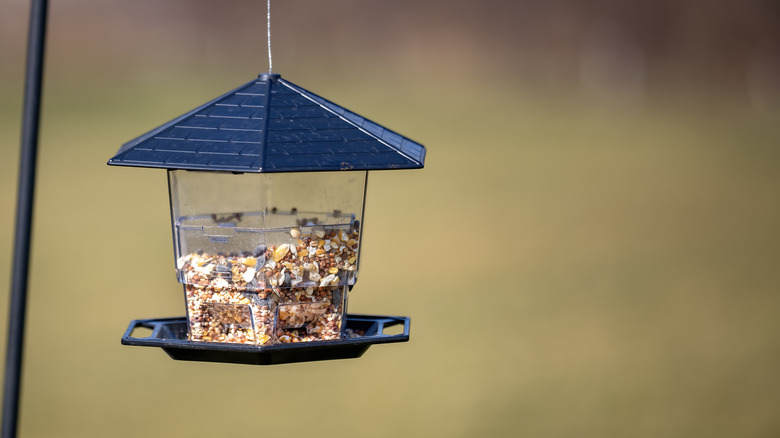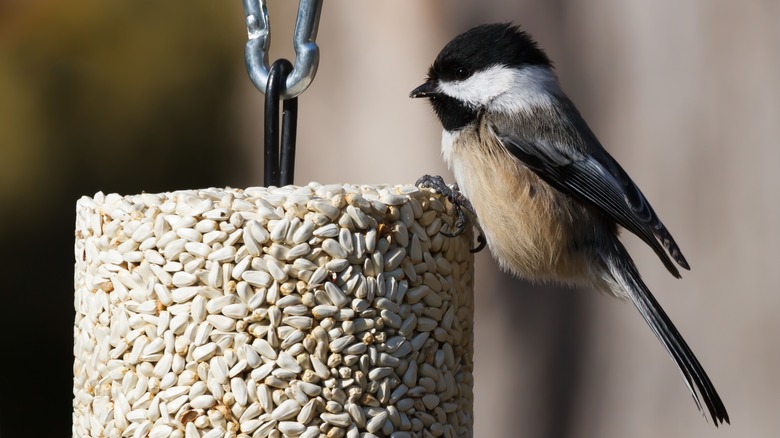Types Of Birds That'll Flock To Your Feeder Once You Add Safflower Seeds
If you enjoy watching your feathered friends year-round, there are multiple benefits to having a bird feeder in your yard. Almost any kind of seed mix will work to attract birds if you don't care what species you draw to the feeder. By focusing on a certain type of seed, however, you can draw particular types of birds to your backyard. By using only one sort of seed, you can also reduce competition at the feeder, which leads to spilling and waste.
Safflower seeds are a good option for a single-seed bird feeder. Some of the birds that eat safflower seeds include the black-capped chickadee, house finch, indigo bunting, mourning dove, northern cardinal, red-bellied woodpecker, Steller's jay, and white-breasted nuthatch. These birds offer a range of distinctive colors that can make it easier for a young child or an older person to tell the birds apart as they're watching the feeder.
Farmers grow safflower seeds around the world, although this plant naturally occurs in warmer climates like the Mediterranean, southwestern Asia, and northeastern Africa. Commercially, safflower is primarily an oil seed used for cooking, cosmetics, and even paints and varnishes. Even though your local birds may not find safflowers in nature, certain species still love safflower seeds and will flock to your feeder. Learn more about the pros and cons of offering safflower seeds to your backyard birds.
Pros and cons of using safflower seeds in your backyard bird feeder
Safflower seeds are pretty easy to find at major retailers or specialty bird stores. In addition to drawing interesting, colorful birds to your feeder, safflower seeds also work for keeping most unwanted pests away. Squirrels will stop hogging the bird feeder when you use only safflower seeds, although they may still visit and chase away birds if you use a mix. Additionally, larger birds like blackbirds and grackles don't tend to like safflower seeds because of the bitter taste, meaning they'll steer clear of your feeder and allow the more colorful species in.
Safflower seeds have a hard shell, since they're in a plant family similar to sunflower seeds. Some birds eat the shell and seed whole, while others crack open the shell to eat the seed inside. Birds that crack the shells may leave them in the yard, creating a mess. Mice will also eat safflower seeds that end up on the ground, so you could draw these rodents to the area by exclusively using safflower in your feeder. Of course, mice and other rodents will eat almost any kind of seed that spills at the bird feeder, so safflower alone probably wouldn't worsen any existing rodent problems. If you're worried about attracting mice, look for a bird feeder design that minimizes the seeds that end up falling to the ground.

